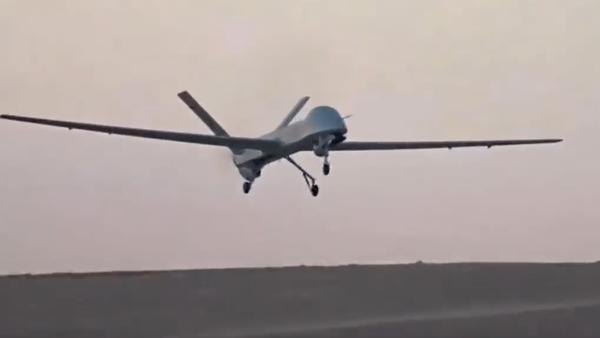In a Wednesday statement, Rainbow UAV Technology’s parent company Aerospace CH UAV announced that the first Rainbow-4 drone constructed at its large and medium-sized drone plant in Taizhou, Zhejiang province, had completed its first test flight.
The armed UAV’s 95-kilometer maiden flight lasted approximately 48 minutes - meeting Rainbow-4 drone design requirements, reported Yicai Global.
According to the Asia Times, the Rainbow-4 UAV is equipped with upgraded electronic payloads and satellite controls which assist the aircraft’s ability to strike a target with a margin of error of less than 1.5 meters.
“The drone will be the first delivery in a contract Rainbow UAV Technology and National Geomatics Center of China,” Yicai Global reported, citing the company’s statement. The deal, worth $22 million, is also said to include seven emergency mapping drones.
With one successful assembly and test under its belt, the Taizhou facility is expected to push out more medium and large-sized UAVs after completing additional phases in equipment commissioning and trial production. The company did not say whether its immediate production schedule would include drones other than the Rainbow-4.
While China’s military developments have increased tensions between Washington and Beijing in recent years, Chinese drone technology in particular has put the Pentagon on high alert in the past several months.
The Department of Defense’s 2018 annual congressional report on the “Military and Security Developments Involving the People’s Republic of China” noted that the People's Liberation Army Air Force (PLAAF) has made consistent strides to “modernize the delivery of indigenous manned aircraft and a wide range of UAVs.”
Furthermore, the Pentagon claimed the PLAAF’s advancements in drone technology were “closing the gap with the US Air Force across a spectrum of capabilities, gradually eroding longstanding US technical advantages.”
The US Army also voiced concerns about combating militaristic developments by so-called “malign actors” Russia and China and focused primarily on the two powers in the public version of its modernization strategy report, which was released last week.


